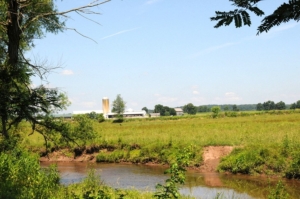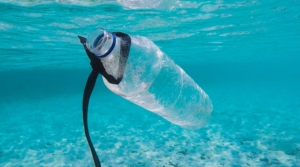Dutton Institute Help Faculty Transtion to Online Learning

Allen Kimel, associate teaching professor of materials science and engineering, successfully transitioned a course that requires group presentations to a dozen outside judges to Zoom with help from learning designers at Penn State. Credit: Penn State
The Dutton Institute at Penn State had been working with learning designers for months on a virtual-learning resource to be used in situations when inclement weather disrupted learning. When the COVID-19 pandemic resulted in the cancellation of all in-person classes, this snow-day protocol helped faculty members transition to teaching in a virtual world. Stevie Rocco, director of learning design at the Dutton Institute, said they received early warnings that the global COVID-19 pandemic might alter classroom education in early March and their team began working to ready their designers with the required tools to assist faculty.
How Does Flooding Affect Homeownership?

Flooding is the most frequent and costliest natural disaster in the United States. With nearly 40% of the nation’s population living along the coast and increasing threats from extreme weather events and sea level rise, there is a need to better understand the impacts coastal flooding and hazards pose for coastal communities. Katherine Zipp, an assistant professor of environmental and resource economics and a faculty member in the Institutes of Energy and the Environment, at Penn State is part of a team that studies how floodplain damages affect long-term housing development in high flood-risk areas. The team’s research includes a model that accounts for climate change and how that factors into flooding.
Penn State Survey Highlights Bay Conservation Practices from Farmers

Survey research led by Penn State is aimed at quantifying farmers’ implementation of best management practices that can enhance water quality locally and downstream in the Chesapeake Bay. Credit: USDA Natural Resources Conservation Service
A new survey gives farmers from four Pennsylvania counties the chance to share how they are helping preserve the Chesapeake Bay watershed. This survey was developed by Penn State in partnership with several state-wide organizations. The agricultural community in Pennsylvania has adopted several environmental measures for improving the watershed’s water quality and soil health, but experts estimate that 80% of these practices are unreported. The aim of the survey is to better understand and properly credit environmental efforts from producers. The survey answers will also help direct new research and extension educational programs for advancing conservation practices in agriculture.
Citizen Scientists are an Untapped Resource for Water Quality Improvement

Citizen scientists can play a needed role in keeping an eye on water quality, according a team of researchers. Here, citizen scientists Ken Johnson (on the stream bank), Genie Robine (facing away from the camera) and Mick McKay (facing the camera) are using a kick net to capture macro-invertebrates for identification and counting. The presence and quantity of macros are indicators of stream health. IMAGE: CCPASEC
There are thousands of citizen groups in the US that monitor water quality and provide important information about the environment, however, this work is not well known and the data is underutilized by local communities. In a recently published study, scientists from Penn State University analyze past interviews and workshops with 13 water groups in Centre County Pennsylvania. These research activities aimed to better understand volunteer water quality monitoring practices and discuss solutions to challenges. These surveys suggest that raising awareness of these volunteers and giving them better technological training could help connect citizen science groups to community leaders for improving the health of water systems.
Designing Plastic to Breakdown in the Ocean
 Using machine learning algorithms, a team of researchers at Penn State New Kensington has quantified the factors that are essential to plastic decomposition in seawater. The goal of this study was to determine the future of the more than 150 million tons of plastic pollution in the world’s oceans and if there is a plastic currently in use that is best suited to decompose in seawater. After comparing over 110 types of plastic, they determined that certain plastics broke down more readily than others when subjected to the conditions found in the open ocean. However, they note that even though the production and use of plastics that decompose quickly is possible, it may not be feasible. Polyethylene and polypropylene are the two most common plastics used and do not easily decompose. From an economic perspective, the shift to a newer, potentially more expensive plastic that will pose less of an environmental danger is unlikely. The researchers suggest that we instead continue to focus on recycling and the use of plastic alternatives as these two options provide more immediate improvements.
Using machine learning algorithms, a team of researchers at Penn State New Kensington has quantified the factors that are essential to plastic decomposition in seawater. The goal of this study was to determine the future of the more than 150 million tons of plastic pollution in the world’s oceans and if there is a plastic currently in use that is best suited to decompose in seawater. After comparing over 110 types of plastic, they determined that certain plastics broke down more readily than others when subjected to the conditions found in the open ocean. However, they note that even though the production and use of plastics that decompose quickly is possible, it may not be feasible. Polyethylene and polypropylene are the two most common plastics used and do not easily decompose. From an economic perspective, the shift to a newer, potentially more expensive plastic that will pose less of an environmental danger is unlikely. The researchers suggest that we instead continue to focus on recycling and the use of plastic alternatives as these two options provide more immediate improvements.
